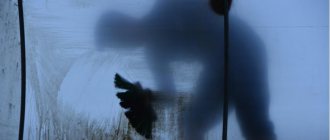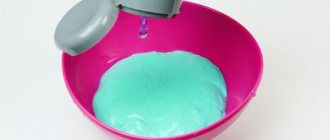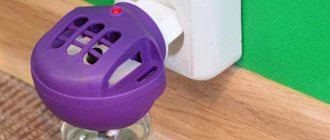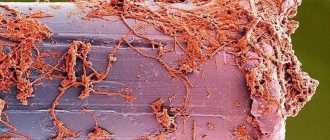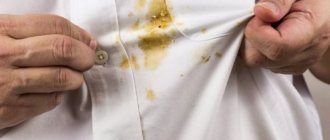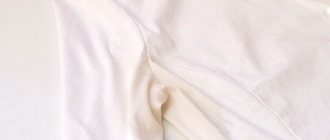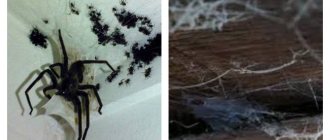The pacifier helps the baby fall asleep, calms the baby and completely satisfies the sucking reflex. In addition, a bottle with a nipple makes it easy for your baby to get formula or breast milk. It is important to choose and use a pacifier correctly and care for the product. The health and safety of the baby depends on this. Caring for your pacifier includes regular washing, sterilization and replacement. In this article, we'll look at how often to change your bottle nipple or pacifier. Let's learn how to choose the right product and how to care for it.
Nipples
The shape of the “classic”, round nipple follows the shape of the nipple of the mammary gland during breastfeeding, which allows you to bring the feeding process as close as possible to natural.
Orthodontic nipples, due to their structure, prevent the swallowing of air and promote the proper development of the palate and lower jaw.
Today there are new nipples on the market with an anti-vacuum system, the main element of which is the valve. This device, firstly, reduces the volume of air swallowed during sucking, significantly reducing the frequency of regurgitation, and secondly, it prevents the nipple from sticking together, allowing the baby not to tear himself away from the bottle during feeding.
All nipples vary in the number of holes. For babies from birth to 2-3 months, nipples with one or two holes are suitable. Nipples with three holes (medium flow) are intended for babies 2-5 months. Four hole nipples (fast flow) are designed for babies over 4 months of age. Nipples also differ in the shape of the holes: x-shaped for juices, y-shaped for liquid cereals, etc.
The benefits of bottle feeding
Benefits of bottle feeding newborns this way:
- The infant will consume an amount appropriate for its size and age, rather than overfeeding or underfeeding. This can support mom.
- This can minimize colic-like symptoms in your baby, as well as bloating or fatigue.
Bottle feeding Myth 1
Bottle feeding lets you know how much food your baby has had.
Moms who bottle feed, whether pumped breast milk or something else, should know that while bottle feeding may seem like a very accurate indicator of the amount of food your baby is consuming, it often isn't. Bottle-fed babies are more likely to regurgitate some food than those fed directly from the breast. If a substance other than breast milk is used, the increased metabolic load on the baby, decreased nutrient absorption, and increased waste significantly reduce the benefit of formula, although it is easier to measure.
Bottle feeding Myth 2
Bottle feeding is easy.
How to bottle feed a newborn?
Bottle caregivers face challenges when feeding their baby safely.
- Wash your hands before handling bottles or feeding your baby.
- Wash bottles and teats/pacifiers with hot, soapy water and rinse well. Some sources recommend sterilizing all feeding equipment, especially bottle nipples/pacifiers.
How to choose a pacifier?
Many nipples now use new laser hole-punching technology. When receiving food from such a nipple, the child puts in no less effort than when sucking at the breast. In addition, the edges of the holes are perfectly smooth, food passes through without difficulty and a uniform flow rate is maintained.
When choosing a pacifier, experts recommend that parents pay attention to where exactly the holes or cuts are located. It is more correct if the holes or incision are located not in the middle (then the liquid pours into the child’s throat), but slightly higher (then the flow of liquid is directed to the sky, the child does not choke, and the food mixes with saliva).
Bottle feeding
For a baby who needs to be bottle-fed (Bottle Feeding a Breastfed Baby), here is some information to help make it beneficial for your baby and to ensure that breastfeeding is fully supported even when formula feeding is used. Please note that not only bottle feeding is considered formula feeding, but also formula feeding for newborns.
This information may also be useful for caring for infants and for instructing how to breastfeed an infant. Please note that if you have any feeding difficulties with your baby, a Lactation Consultant is a great help. While this information is useful for any formula-fed baby, it is especially intended for babies under 6 months of age.
Babies should be bottle fed
- Kept in an upright position; It is especially important not to let your child drink from a bottle while lying down. This situation is associated with tooth decay and an increased incidence of ear infections.
- For 10-20 minutes at a time to mimic the normal breastfeeding experience. This element of time is important because the baby needs time to recognize that he is full long before his stomach becomes full.
- Be careful to allow the baby to suck the nipple into the mouth rather than push it into the mouth to allow the baby to control the initiation of feeding. Stroke your baby's lips downwards with the nipple to create an ingrained wide-mouth response, and then allow the baby to "accept" the nipple rather than thrusting it.
- In accordance with the rhythm of feeding; the parent should encourage frequent pauses while the baby drinks from the bottle to mimic the feeding patterns of a nursing mother. This distracts the baby from swallowing the bottle and may alleviate confusion or nipple preference.
- To satiation, so that the baby is not persistently encouraged to finish the rest of the milk in the bottle through measures such as forcing the nipple into the mouth, massaging the infant's jaw or throat, or squeezing the nipple in the infant's mouth. If the baby falls asleep and releases the pacifier from the bottle before the bottle is empty, the baby is ready; Don't wake your child up to "finish."
Pacifiers
In some cases, the use of a pacifier is not only desirable, but also necessary. It is justified to use a pacifier in a baby with a strong sucking reflex, as well as in children with increased excitability - sucking a pacifier calms them down. Additionally, sucking a pacifier is better than thumb sucking, which can cause jaw deformation and malocclusion.
There is also an opinion that sucking a pacifier helps with flatulence (excessive accumulation of gases in the intestines). The pacifier stimulates the intestines, which helps eliminate accumulated gases.
What types of feeding bottles are there?
Baby bottles for feeding a newborn come in several types: bottles are divided into different materials, sizes, nipple shapes and anti-colic systems.
Pigeon
Pigeon feeding bottle photo:
Pigeon creates newborn feeding bottles specifically for babies with cleft lip or palate. All their products are presented on the website. Pigeon bottles are produced by a Russian company.
Philips
Another popular company is the manufacturer Philips:
Avent
Avent bottle photo:
This manufacturer is distinguished by the fact that it produces anti-colic bottles for newborns. Many mothers, in case of problems with the baby’s digestion, purchase an Avent anti-colic bottle for newborns with a special nozzle.
How to choose a pacifier?
Pacifiers come in round and orthodontic shapes. In addition, some companies produce drop-shaped pacifiers for babies (0-3 months).
The size of the pacifier varies depending on age: most often it is 0-3 months, 3-6 months. and 6-12 months.
The shield - the base of the pacifier - should be wide enough to prevent accidental swallowing of the pacifier; have a cutout for the spout and ventilation holes near the base of the nipple to prevent diaper rash. It is better if the pacifier is made from a single piece of latex or silicone. Then the baby will not be able to take it apart and choke on small parts, or get hurt in his sleep.
Currently, three materials are used to make pacifiers and pacifiers: rubber, silicone and latex. Rubber nipples are gradually becoming a thing of the past.
Silicone nipples are tighter and less susceptible to deformation. Silicone is more durable than latex. Silicone nipples are recommended to be used only before the child has his first teeth.
Latex is softer than silicone. After the child’s teeth appear, it is recommended to switch to a soft latex pacifier, which has less impact on tooth growth. Unlike silicone, cases of allergic reactions have been reported with latex.
Latex nipples need to be changed once every 2-3 weeks, and silicone nipples once every 4-5 weeks, even if there is no damage to the nipples. A damaged pacifier made of any material must be replaced immediately, because a piece that comes off from it can get into the baby's respiratory tract.
To prevent the pacifier from getting lost, it can be hung on a chain with a special clip. Some parents put a string with a pacifier around the child's neck. Under no circumstances should you do this: it can lead to suffocation.
When you can and cannot give your baby a pacifier: tips and reviews
Kira : “My child did not take any pacifiers. I bought several types - orthodontic, silicone, latex. My daughter just spat them out and that’s it. In the end, I abandoned this idea. Although I understand that in some situations a pacifier could calm the baby. But it also has its advantages: we didn’t have to painfully give it up. I look at my friends, either stomatitis or hysterics without a pacifier. We've been passed over."
Anna : “I believe that the pacifier does not affect the bite in any way. Mine is incorrect, but my sister’s is normal. Although we both sucked the pacifier.”
Diana : “We are with a pacifier. The child is crying, he gives him a pacifier, that’s it - the child is calm. Of course, it needs to be sterilized and changed constantly. Then there will be no sores in your mouth. We are 9 months old and haven’t given up yet.”
Each parent has the right to decide for himself whether his child needs a pacifier. When making a decision, consider the character and needs of your baby, because all children are different. And most importantly, do not give in to the persuasion of advisers if you feel and see that this does not benefit the child. Remember, only parents are responsible for the health and well-being of the baby.
How to part with a pacifier?
You should start weaning your child off the pacifier from the age of six months, when his first teeth appear. By one and a half to two years, the child’s sucking reflex completely fades away.
What can be done to ensure that problems with using a pacifier do not arise? Up to 2-3 months, a pacifier can be offered to a child only in the most extreme cases: if the baby is very excited, overtired, or if his sucking reflex is too strong. You should not offer a pacifier to your baby when he is not fussing.
How to prepare a feeding bottle
If infant formula is used:
- Make sure all equipment used is thoroughly cleaned: bottle opener, measuring cups/spoons, mixing bowl, etc.
- The expiration dates of the mixture have been observed.
- A clean, bacteria-free source of water must be available for the powder formulation. If tap water is used, the caregiver must decide whether to boil the water to kill bacteria (which can concentrate any heavy metals in the water) or use unboiled water. Because powdered baby formula is not sterile, it should be mixed with water that is at least 70°C to kill any harmful bacteria that may be present in the formula (to reduce the risk of infection, do not mix with chilled water - even if it is bottled or has already boiled). Refrigerate the formula before feeding your baby.
- The quantities the baby will need must be carefully assessed, as any unused formula should be discarded after feeding.
- If you are using both breast milk and formula during the same feeding, it is best not to mix them in the same bottle. This is simply to avoid wasting breast milk when baby doesn't finish the bottle (since it contains formula, the contents should be discarded at the end of the feeding).
Sources
- Rodrigues GPN., Oliveira MIC., Boccolini CS., Sally EOF., Moraes JR. . // Cad Saude Publica - 2022 - Vol37 - N4 - p.e00129919; PMID:33886708
- Ducharme-Smith K., Gross SM., Resnik A., Rosenblum N., Dillaway C., Orta Aleman D., Augustyn M., Silbert-Flagg J., Caulfield LE. Exposure to Baby-Friendly Hospital Practices and Breastfeeding Outcomes of WIC Participants in Maryland. // J Hum Lact - 2022 - Vol - NNULL - p.890334421993771; PMID:33591853
- Miranda C., de Sousa TM., do Carmo AS., Pereira SCL., Notaro KAM., Dos Santos LC. Use of Artificial Nipples Among Brazilian Infants and Associated Factors. // J Trop Pediatr - 2022 - Vol66 - N5 - p.511-516; PMID:32049350
- Silva KBD., Oliveira MIC., Boccolini CS., Sally EOF. Illegal commercial promotion of products competing with breastfeeding. // Rev Saude Publica - 2022 - Vol54 - NNULL - p.10; PMID:32022139
- Kivlighan KT., Murray-Krezan C., Schwartz T., Shuster G., Cox K. Improved breastfeeding duration with Baby Friendly Hospital Initiative implementation in a diverse and underserved population. // Birth - 2022 - Vol47 - N1 - p.135-143; PMID:31788842
- Batista CLC., Rodrigues VP., Ribeiro VS., Nascimento MDSB. Nutritive and non-nutritive sucking patterns associated with pacifier use and bottle-feeding in full-term infants. // Early Hum Dev - 2022 - Vol132 - NNULL - p.18-23; PMID:30928831
- Zimmerman E. Pacifier and bottle nipples: the targets for poor breastfeeding outcomes. // J Pediatr (Rio J) - 2022 - Vol94 - N6 - p.571-573; PMID:29452072
- Batista CLC., Ribeiro VS., Nascimento MDDSB., Rodrigues VP. Association between pacifier use and bottle-feeding and unfavorable behaviors during breastfeeding. // J Pediatr (Rio J) - 2022 - Vol94 - N6 - p.596-601; PMID:29136496
- von der Gathen Y., Sander I., Flagge A., Brüning T., Raulf-Heimsoth M. Quantification of protein and latex allergen content of various natural rubber latex products. // Allergol Select - 2022 - Vol1 - N2 - p.109-119; PMID:30402609
- Jaafar SH., Ho JJ., Jahanfar S., Angolkar M. Effect of restricted pacifier use in breastfeeding term infants for increasing duration of breastfeeding. // Cochrane Database Syst Rev - 2016 - Vol - N8 - p.CD007202; PMID:27572944
Precautionary measures
The pacifier will be in the child’s mouth, therefore, it is worth taking care of the baby’s safety and taking certain precautions: Before giving the child a pacifier for the first time, it must be boiled for 2-3 minutes. During the day, a baby's pacifier can end up on the floor, on the sofa, and in dirty hands, so you should carefully monitor cleanliness. Protective cases help to partially save the pacifier from contamination, but even they do not completely protect the product. Therefore, heat treatment should be repeated periodically. If the pacifier falls on the floor, do not lick the pacifier - it is better to rinse it with boiled water. On the street you can use mineral water, but it is better to replace the pacifier with a spare one. If cracks appear on the pacifiers, they should be replaced immediately.
Acceptable age
You can start using a pacifier immediately after birth only in exceptional cases - if artificial feeding begins immediately after birth and the baby cannot be calmed down even with skin-to-skin contact. If a caesarean section was performed, the medical staff does not give the baby a pacifier so that breastfeeding can be established as quickly as possible after the baby is returned to the mother.
If a woman is planning a natural birth and breastfeeding, she should not plan to use a pacifier and take it with her to the hospital.
In 2005, a study was conducted in Poland “Factors affecting exclusive breastfeeding in Poland: cross-sectional survey of population-based samples.” As a result, two consecutive surveys were conducted to identify factors negatively affecting breastfeeding. One of these factors was the use of a pacifier, including in the early postpartum period.
According to the Brazilian study “Breastfeeding-Friendly Primary Care Unit Initiative and the relationship with exclusive breastfeeding,” conducted in 2013 and published on the International Library of Medicine website, pacifier use is the leading factor in breast refusal in newborns, ahead of even cesarean section and low breastfeeding. maternal education.


